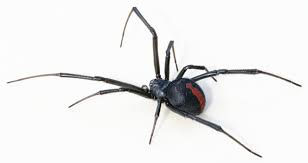Polyphagous Shot-Hole Borer Outbreak in Perth: What You Need to Know
- yohan57
- Jul 9
- 2 min read
A tiny beetle is causing significant concern across Perth's urban and natural landscapes. The Polyphagous Shot-Hole Borer (PSHB), an invasive pest native to Southeast Asia, has been detected in multiple areas of Western Australia, leading to extensive tree damage and prompting urgent biosecurity measurers. The following information is correct as of 25/06/2025, please check the Department of Primary Industries and Regional Development's website for the latest information.
🐞 What is the Polyphagous Shot-Hole Borer?
The PSHB (Euwallacea fornicatus) is a small beetle, approximately 2mm in length, that bores into trees and introduces a symbiotic fungus (Fusarium sp.). This fungus disrupts the tree's vascular system, leading to branch dieback and, eventually, tree death. The beetle has a broad host range, affecting over 400 tree species, including box elder maples, oaks, plane trees, and willows.
🌳 Impact on Perth's Trees and Ecosystems
Since its detection in Perth in 2021, the PSHB has caused significant damage:
Over 3,000 trees have been destroyed .
Iconic locations like Kings Park, Hyde Park, and Lake Claremont have seen tree removals to contain the spread .
The pest poses a threat to both urban tree canopies and native ecosystems, with potential long-term ecological consequences.
🚫 Quarantine Measures and Restrictions
To combat the spread of the PSHB, the Department of Primary Industries and Regional Development (DPIRD) has implemented a Quarantine Area Notice covering the entire Perth metropolitan area, encompassing 30 local government areas.
The quarantine area is divided into two zones:
Zone A: Areas with high numbers of infested trees where intensive control activities, such as tree removal, are underway.
Zone B: Areas with fewer or no infested trees, focusing on heightened surveillance to identify and control new infestations.
Residents and businesses within these zones must adhere to strict regulations, including restrictions on the movement of wood and plant materials.
🔍 How to Identify an Infestation
Signs of PSHB infestation include:
Tiny, round entry holes in the trunk or branches, approximately the size of a ballpoint pen tip.
Discolouration or staining around the holes.
Gumming or frass (sawdust-like material) exuding from the holes.
Wilting or dieback of branches and leaves, often starting in the upper canopy.
If you suspect a tree is infested, it's crucial to report it immediately to DPIRD's Pest and Disease Information Service at +61 (0)8 9368 3080 or via the MyPestGuide® Reporter app.
🛡️ What Tritan Pest Management Can Do
At Tritan Pest Management, we are committed to supporting the community during this outbreak by:
Providing expert advice on identifying and managing PSHB infestations.
Assisting with compliance to quarantine regulations for businesses and residents.
Working with DPIRD alongside sister company, Tritan Fumigation.
📞 Contact Us for Assistance
If you're concerned about the health of your trees or need guidance on complying with quarantine measures, contact Tritan Pest Management today.
Phone: (08) 6115 0101
Website: www.tritanpestmanagement.com.au
Together, we can work towards protecting Perth's trees and ecosystems from this invasive threat.




Comments